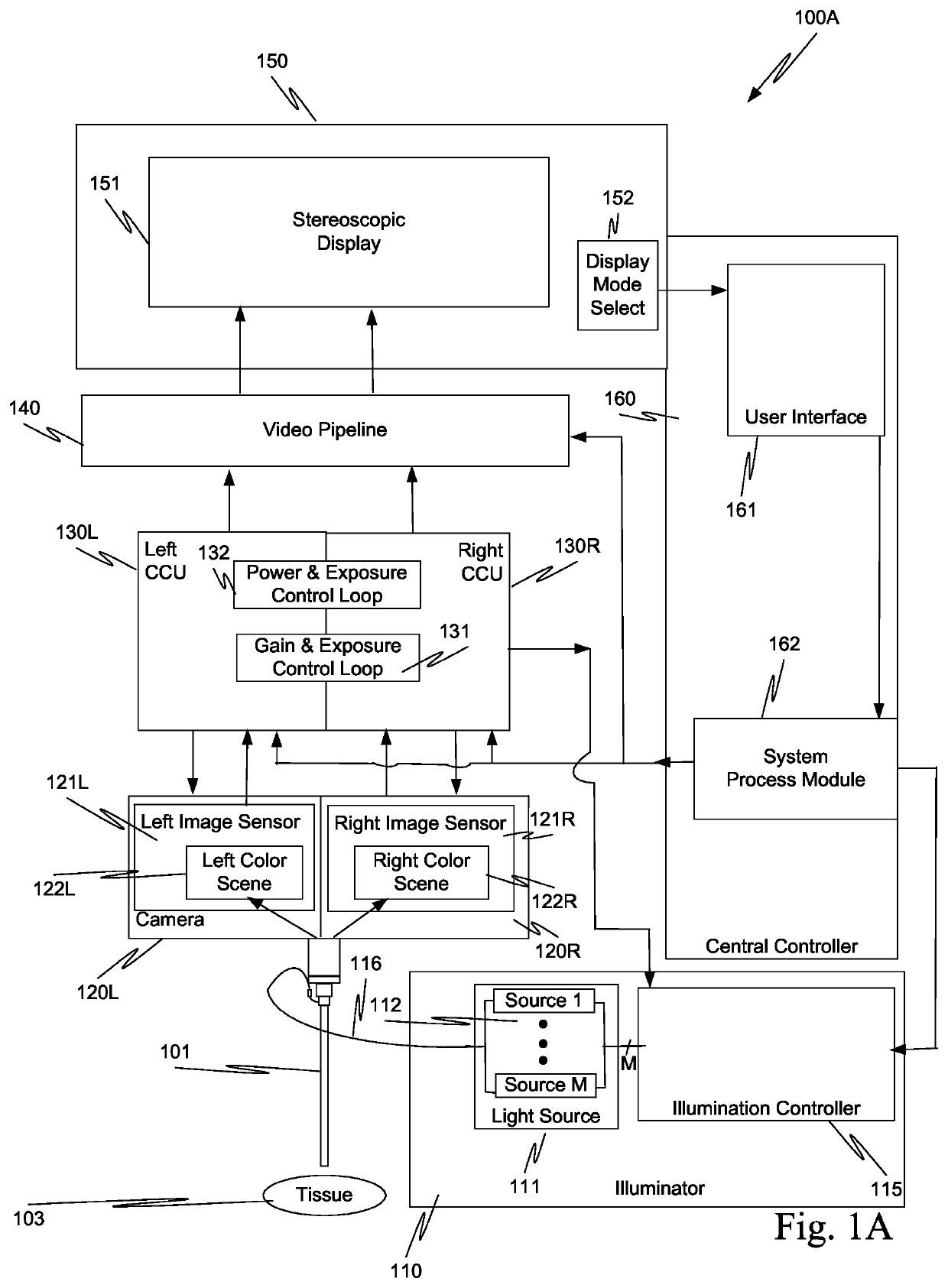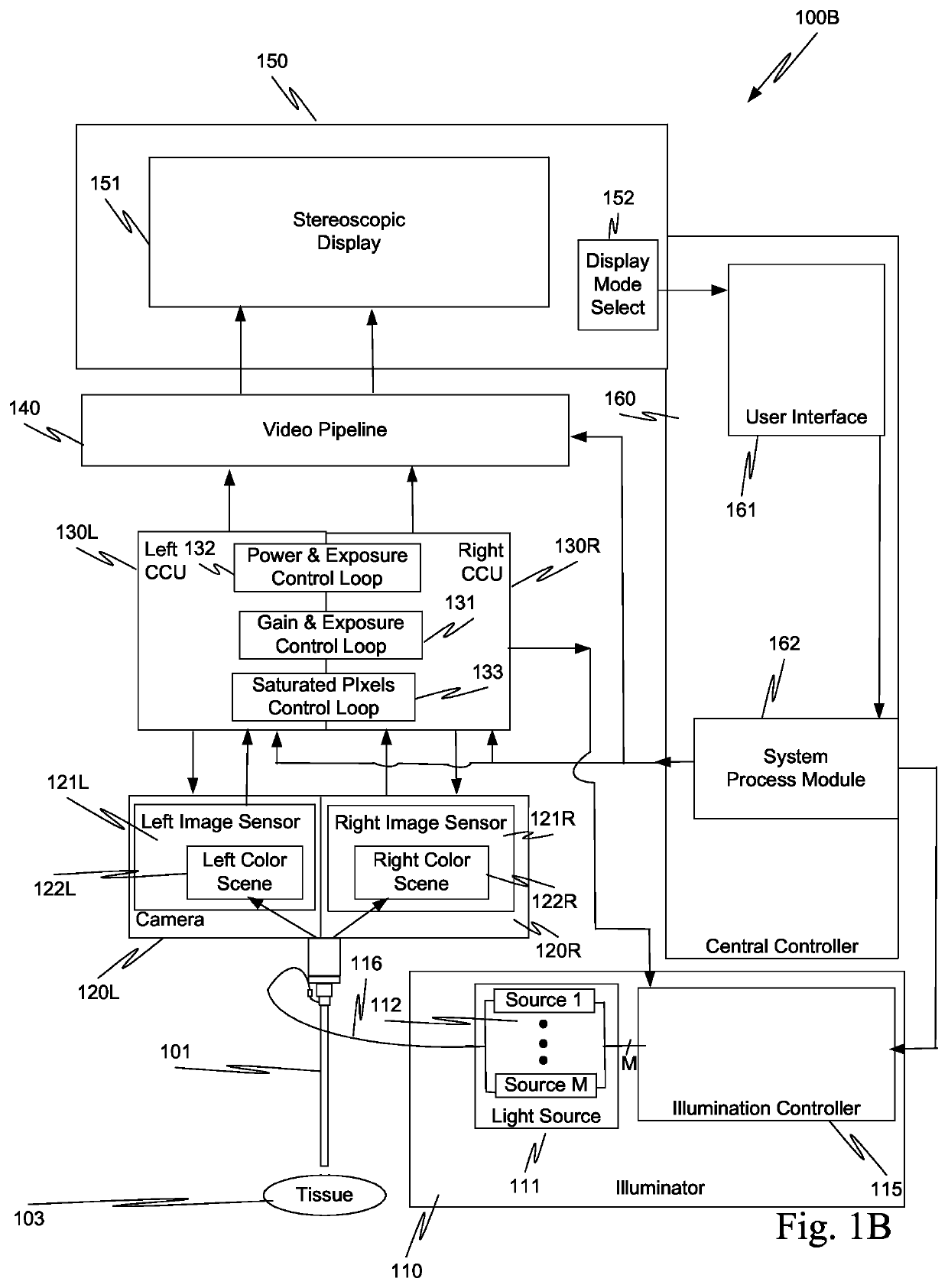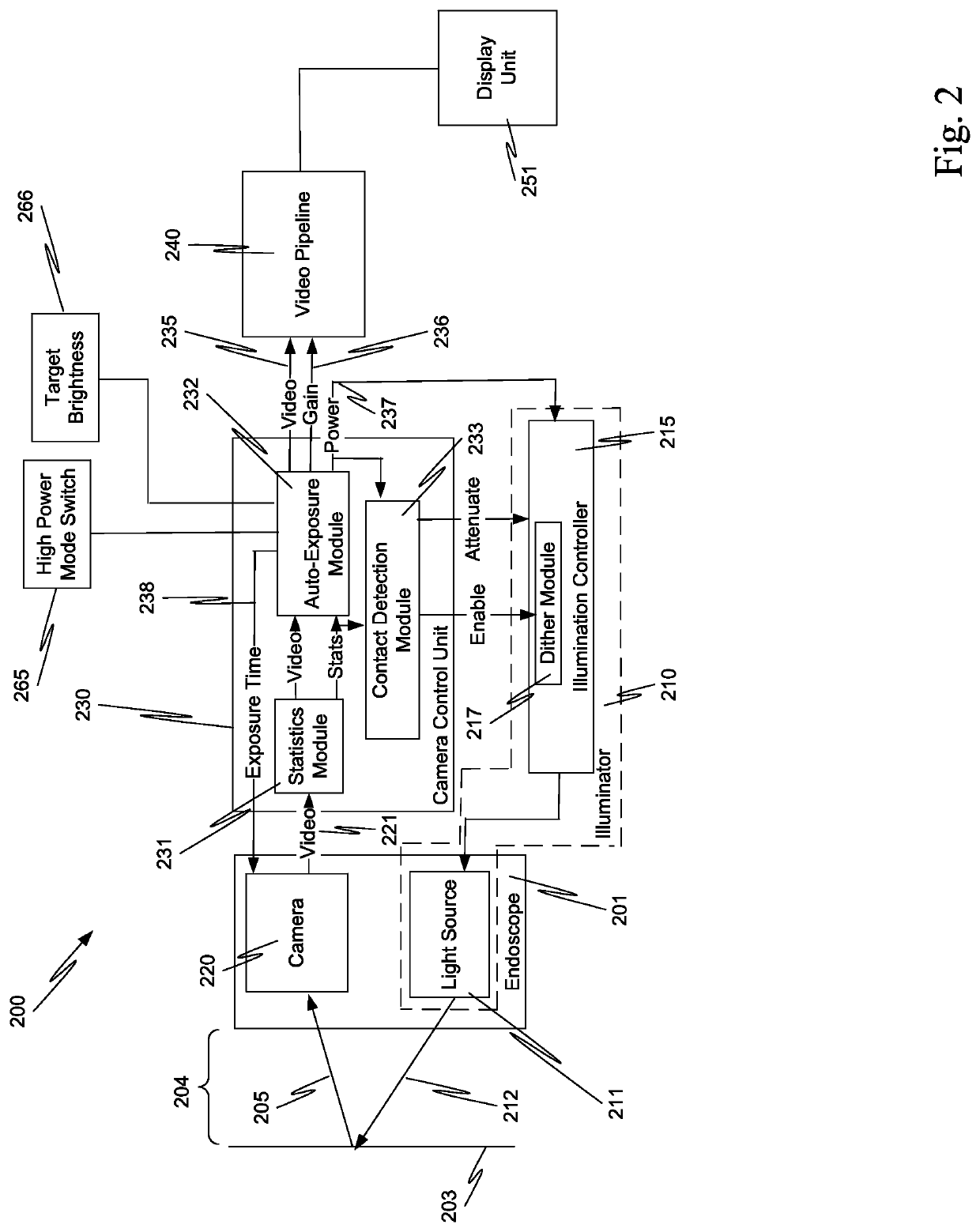System and method for tissue contact detection and for auto-exposure and illumination control
a tissue contact and auto-exposure technology, applied in the field of endoscopic imaging, can solve problems such as the quality of images provided, and achieve the effects of reducing the target brightness, and reducing the number of saturated pixels
- Summary
- Abstract
- Description
- Claims
- Application Information
AI Technical Summary
Benefits of technology
Problems solved by technology
Method used
Image
Examples
Embodiment Construction
[0034]In one aspect, scenes captured with endoscope101 of teleoperated surgical systems 100A and 100B (FIGS. 1A and 1B) and displayed on stereoscopic display unit 151 maintain a consistent brightness even though the working distance between tissue 103 and the distal tip of endoscope 101 changes. Teleoperated surgical systems 100A and 100B also automatically detect when endoscope 101 contacts tissue and adjusts the output optical power of illuminator 110 so that tissue damage does not occur.
[0035]Illumination having an output optical power, e.g., visible light, from an illuminator 110 exits endoscope 101 at a distal tip of endoscope 101, sometimes referred as a tip. The illumination is reflected from tissue 103 and is captured as frame 122L that includes a left color scene captured by left image sensor 121L of left camera 120L and as a frame 122R that includes a right color scene captured by right image sensor 121R of right camera 120R. Each of left and right image sensors 121L and 1...
PUM
 Login to View More
Login to View More Abstract
Description
Claims
Application Information
 Login to View More
Login to View More - R&D
- Intellectual Property
- Life Sciences
- Materials
- Tech Scout
- Unparalleled Data Quality
- Higher Quality Content
- 60% Fewer Hallucinations
Browse by: Latest US Patents, China's latest patents, Technical Efficacy Thesaurus, Application Domain, Technology Topic, Popular Technical Reports.
© 2025 PatSnap. All rights reserved.Legal|Privacy policy|Modern Slavery Act Transparency Statement|Sitemap|About US| Contact US: help@patsnap.com



